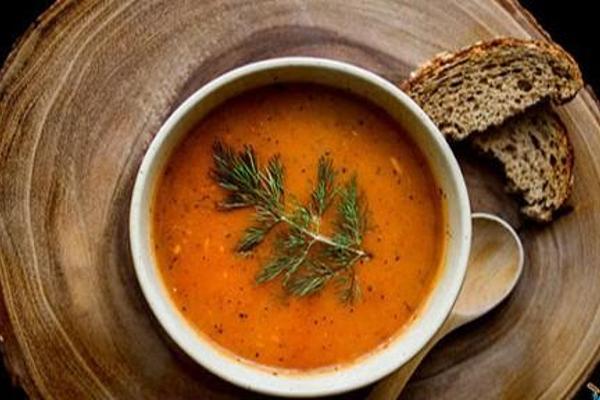Tarhana: Trigger of memories


When September comes, a yeasty odd smell lingers at many homes across Türkiye. One of the most obsessive tasks of a mother is preparing tarhana, undoubtedly one of the homeliest soups in Turkish cuisine. So, what is tarhana? First of all, it is a dried soup mix, which is a must-prepare winter provision in Turkish homes. You just reconstitute tarhana in water, give it a few rolling boils, drizzle with sizzling butter spiked with paprika, and voilà, on the table, everybody is happy!
Tarhana is the name of both the product and the soup made from it, but first and foremost, it is a food preservation method involving fermentation and dehydration techniques, enforced with the preserving qualities of salt and aromatic herbs present in its composition. Tarhana is probably the most loved comfort food of Turkish cuisine, a hearty, umami-rich nutritious winter soup full of the goodness and bounty of summer months. Tarhana is probably the first instant soup on the planet, a creation dating back to ancient times, a totally desiccated product made by drying a fermented mix of several food items.
Initially, it was a fusion food created by combining products of sheep and goat herding nomads and grain-cultivating settled communities, simply made by combining yogurt and wheat berry, a protein and a carb, grain cooked, mixed with strained salted yogurt and dried to be reconstituted later. Eventually, over centuries it evolved into a more complex product with tomatoes, peppers, herbs, greens, vegetables and sometimes fruit involved in the process. Cooked or raw ingredients are mixed with flour and worked into a sort of sourdough, mixed with yogurt, fermented for several days and dried in meatball-like pieces, then broken down into pellets, then crumbled and dried further to end up in a powdered soup mix. New studies show that it is a super food rich in pre-probiotics and nutrients being a fermented product. It is also the rescue of home cooks, being an almost ready food in the pantry, easily turned into a satisfying dish, sometimes a meal in itself. After all the toil of preparing it, the end product is rich and nutritious, filling and satisfying. Luckily, now it is available also commercially, sometimes very homely prepared by women’s cooperatives, sometimes instantly in the cup by opening a sachet of an ultra-new freeze-dried industrial product. However, that unique taste, admittedly an acquired taste for foreigners, is always there. For Turkish people, it is not only a beloved dish, but a bowl of tarhana soup is a sensation that triggers memories at every level.
Tarhana is pure nostalgia. A spoonful instantly brings many memories. The first memory for many is usually not the taste of the soup but that captivating yeasty smell of when it is being prepared as a winter provision in September. It is the aroma of the fermenting dough, pretty much the same sense that a good sourdough bread evokes. Then, when the pieces of dough are placed on clean cloth sheets, this unique smell intensifies and the whole house is invaded by this haunting scent of drying tarhana. Another memory related to this smell is the fun of childhood. In many regions, tarhana is prepared communally, with neighbors helping each other with winter preparations, tarhana is sometimes spread in the open air, in gardens, or even in the town square, then it is the children’s duty to ward off the cats and birds, pure fun to chase them away. At home, children help their moms, usually taking on the task of crumbling semi-dried morsels of tarhana. Tarhana prep time is always a fun time for children.
Of course, the next memory should be related to its taste. Every other region has its own tarhana variety, so the taste triggers of homeland, sometimes brings memories of the harsh winter months where a bowl of tarhana warms both the body and the soul, and fills the belly, a sense of pure satisfaction and homely warmth. But it’s not only the taste, it is also the convivial home dinners where the family shares time together. Even if you have your tarhana in a mug, lonely in front of the cold blue screen of your laptop, that tarhana taste and smell will bring you back to the warmth of home. Then, it’s the particular taste itself, again depending on the region. The diversity of local variations is mind-blowing, ranging from the basic yogurt-wheat berry tarhana that can be considered as the archaic prototype, going to the tomato-red pepper based one which became the mainstream norm eventually, but tarhana may sometimes go beyond imagination, some examples, even being fruit-based involving cornelian cherries or quinces. Each tarhana type is unique in a sense, sometimes every household makes its own particular one, adding herbs and spices kept secret in the family. Of course, that particular taste of the home-made one is what triggers all the memories of family and sometimes the memory of lost ones. All demonstrates the versatility of the concept, which goes beyond being merely a simple soup but a spoonful of memories, of long-gone days, lost joyous times, convivial tables and of the bountiful taste of sun-ripened tomatoes and peppers, vegetable gardens of late summer, and particularly of September!

